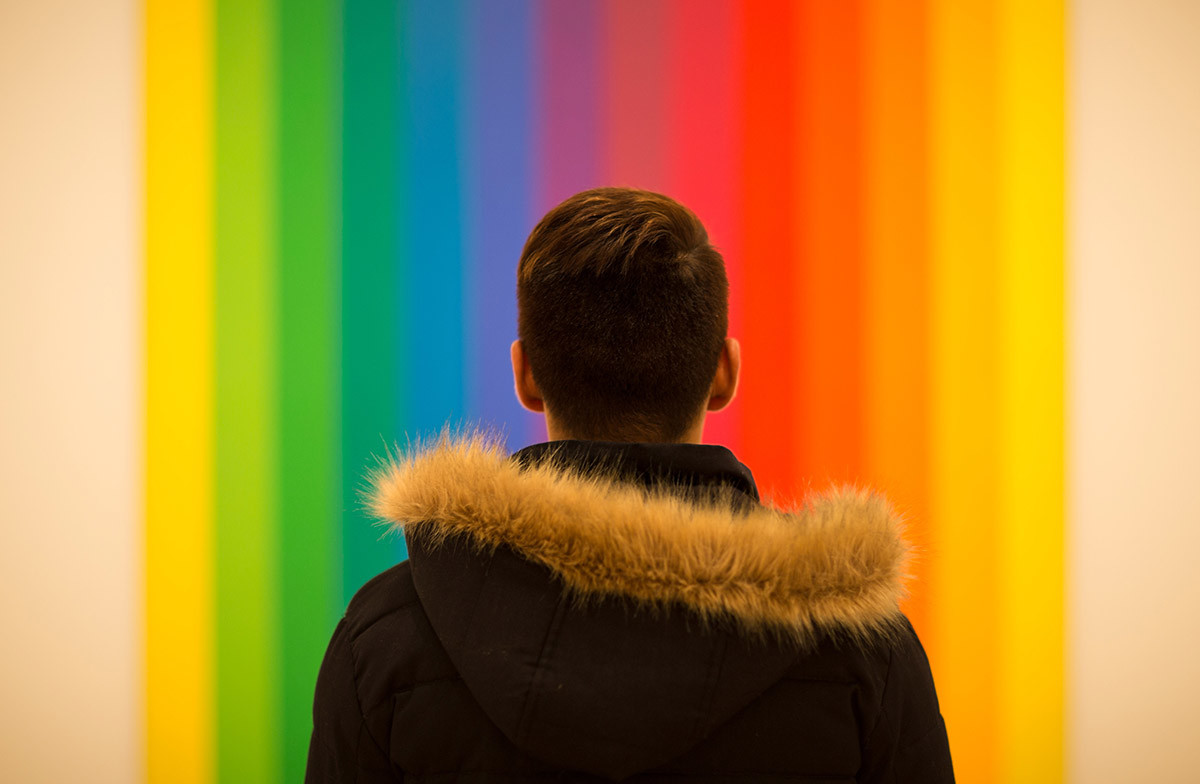For years, authors, artists, and marketers have tried to harness the power of color to make their books, creations, and companies stand out.
But while each and every single one of us has a favourite color, almost all researchers have agreed there are no universal rules when it comes to how colors make us feel. So how do you go about picking the best color (or colors) for your brand? Ones that will make you memorable and attractive while staying true to your other brand promises? Let’s find out.
For more on design thinking, marketing, and creativity, click here to join 45,000 entrepreneurs and creatives who get our weekly newsletter.
How your mind deals with color
To understand how color can influence our thinking, we need to first understand the 2 basic ways our mind handles stimuli like color: Embodied meaning is intrinsic—it’s inherently inside something and doesn’t rely on our emotions or experiences to have meaning. Referential meaning is dependant on the network of associations activated when we’re exposed to the stimulus. In other words, we create meaning through what we immediately think of when we see it. When it comes to color, almost all empirical studies show there is no universal meaning for each color. So for a color like blue, while you might associate it with happiness or safety, other cultures actually see blue as a sign of unhappiness. If you’re choosing colors on how you feel, understand that meaning can quickly get lost on your customers. So, if we can’t use any intrinsic meanings behind colors to influence people, what can we do?The power of color association (and how to use it)
Instead of trying to connect your brand’s color to some sort of cultural or personal connection, a more powerful technique is to use associations. What do your users think of when they see your brand’s coloring? Or, more importantly, what do you want them to see? Start by thinking about your brand personality. In The Interactive Effects of Colors, researchers found the relationship between brands and color hinges on ‘the perceived appropriateness of the color being used for the brand’. In more basic terms, the color needs to feel like a good ‘fit’ with what’s being sold. Think about Apple’s use of white and how it perfectly embodies their values of clean, minimalist, and simple designs. Or Victoria’s Secret’s heavy use of pink in their branding. Both companies are using color to support their personalities. The more you use these colors to reinforce your brand’s values, the more customers start to recognize you in those colors. As authors Labrecque and Milne state in their study Exciting red and competent blue: the importance of color in marketing:“As brands pair with colors, brand associations and colors become linked in memory, thus semantic meanings of color are created through a dynamic and reflexive process. “Importantly, the activation of color associations, as well as their influence on affect, cognition, and behavior, may occur without a person’s conscious awareness or intention, operating as a nonconscious prime with the ability to activate various motivations.”It might be an unlikely place to look for inspiration, but comic book superheroes have been using this method for years. In his book, Understanding Comics, author Scott McCloud talks about the power of costumes and color schemes to create a unified meaning (or association) with a hero: Your brand’s colors are an opportunity to build symbolic meaning that can affect the way people think when they see your brand or work without them even knowing it. In fact, in the study Impact of Color in Marketing, researchers found anywhere from 62% to 90% of snap judgements about products can be based on the color alone. As McCloud says: “Symbols are the stuff of which Gods are made.”
A step-by-step guide to creating a brand color palette
Our minds are hardwired to reject both under- and over-stimulating information, so it’s important to create a color palette that delivers both visual interest and a sense of order. Too much visual information and it feels too chaotic; too little and we move onto something else. Here’s a quick and basic step-by-step guide to build out your palette:Step 1: Choose your main colors
What color you choose to begin with is up to you. You’ll be building the associations around it as you develop your brand. But to begin with, it’s important to choose a color that is in line with your brand values. Think browns and greens for an outdoor company. Or light blues or white for an NGO that helps to provide clean water. Once you’ve chosen your main color you’ll want to learn some color theory to find complementary hues. Let’s start with the color wheel. The first color wheel based around the primary colors of red, yellow, and blue was developed by Sir Isaac Newton in 1666 and has remained an important way to put order to color. There are 3 basic types of wheels: Primary colors, Secondary colors, and Tertiary colors (which is shown above). A primary color wheel has only 3 colors: Red, yellow, and blue—which, in traditional color theory, are the three pigment colors that all other colors are derived from. A secondary color wheel includes green, orange, and purple—colors that are made by mixing the primary colors together. A tertiary color wheel brings in hues such as yellow-orange, red-orange, blue-green, and yellow-green. These are made by mixing the primary and secondary colors together. (You can make more complex wheels but for the sake of this exercise let’s stop here). Now that we can see where different colors naturally fit, it’s time to look at how they work together. Just like in music, you can create balance and engagement through color harmony. If you look at your color wheel, there are a few different ways to create color harmony. The first is using analogous colors—three colors that are side by side. For example, if you want your company’s main color to be green your analogous complements would be yellow-green, and blue green. Another method, and one that can be more striking, is to use complementary colors—any 2 that are directly opposite each other on the wheel, such as red and green (think Christmas!) or yellow and purple. Lastly, if you want to expand and find other colors that work, you can use the analogous complements to your main complements: so your four-part color story could include green, yellow-green, red, and purple-red. This is a very basic look at color theory and there are some great resources out there to help you find complementary colors.Step 2: Create more harmony (or chaos)
While harmony and complementary colors are important for logos and websites, there are times where you’ll want to use color to draw attention. According to The Isolation Effect, items, text, and images that stick out are remembered more clearly. When ‘one of these things is not like the others’, we have an easier time recalling it. Using a color that isn’t harmonious with your main palette is a great way to make something stand out. Like a sign-up form or some other call-to-action. In the above example, the bright red button on a light blue background instantly draws our attention. To find these colors, play around with your complementary colors. See how different shades react to being placed side-by-side. See how the same yellow reacts differently to the background color above? It becomes more vibrant with black. Less brilliant with white. Blends in and becomes more muted with orange. And ‘pops’ with cyan. Once you’ve got your main color palette down it’s just a matter of experimenting.Step 3: Create a set of color rules
Now that you’ve found the colors you want to use, it’s time to create a set of rules. This is where you align your values with your palette. The process can be as basic as just saying “red signifies innovation and green signifies environmental consciousness”. If you’re having trouble defining your core values try writing a ‘4-word story’.- Start by asking yourself what adjectives pop up every time you talk about your company. Don’t throw any ideas out.
- Next, eliminate any that are totally off the mark and organize the rest into groups. You might have one that talks about your advantages, or descriptors of your customers/audience.
- After you have groups, consolidate them down until you have 4 and pick an ‘essential’ word from each.
- Now rank those 4 from most to least important. The most important is assigned your main color. While your second most popular is given the complement.
- After that, assign the rest of your attributes to colors.
As someone who writes for a living it’s incredible to see how quickly a color can represent values that might take pages to get across in words. That’s why understanding how color works, even on a basic level, is such an amazing and quick way to give your work meaning beyond the surface. Your brand’s color palette is your chance to become iconic. It’s why you can recognize an iPhone from across the street or a McDonalds sign 20 miles down the highway. So pick a color and get started!






